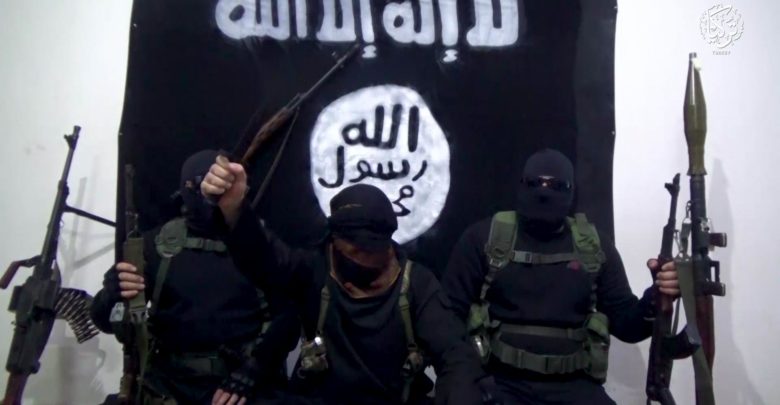
The ongoing Russian invasion of Ukraine overshadowed the latest step taken in Washington to turn the page on 20 years of a costly, largely military-driven approach to addressing conflicts.
Informed by some of the lessons from the past two decades, the long-awaited US Strategy to Prevent Conflict and Promote Stability marks a shift away from a reactive approach that often exacerbated the underlying drivers of, and prolonged rather than reduced, the violence.
The new strategy, which is to implement the 2019 Global Fragility Act, favors a more sophisticated “whole of society” approach with an emphasis on prevention.
It prioritizes addressing the factors contributing to violence and political instability and fostering and sustaining long-term partnerships in affected countries with governments, civil society, and the private sector.
The strategy also articulates a long-overdue commitment to breaking down the array of bureaucratic and funding siloes that have too often hindered the development of a more integrated, effective, and sustainable approach to violence and conflict prevention.
The U.S. Strategy to Prevent Conflict and Promote Stability outlines a ten-year, whole-of-government effort to foster peace and long-term stability through integrated diplomacy, development, and security-sector engagement. https://t.co/5YFLnGOLLd
— US Africa Media Hub (@AfricaMediaHub) April 4, 2022
The Counterterrorism Juggernaut
The framework makes references to counterterrorism and the need for complementarity between this new strategy and relevant, existing US strategic frameworks, including those related to counterterrorism.
However, it fails to acknowledge that its effectiveness (and the approach it encapsulates) in countries affected by terrorism or violent extremism risks being undermined without a significant and complementary shift in counterterrorism policy and practice.
Currently, it is the overly securitized, largely reactive paradigm that continues to treat (or view) terrorism as an “exceptional” threat and focuses largely on its symptoms rather than its roots.
For the past 20 years, “counterterrorism” has swallowed up trillions of dollars, catalyzed the development of a massive web of institutions, practitioners, and networks, and has perhaps done more to exacerbate the drivers of violence and conflict rather than mitigate the threat.
This last point is particularly evident in countries where the rule of law and democratic institutions are weak or absent. As the most recent Global Terrorism Index highlights, these places are where the overwhelming majority of terrorist violence occurs.
In short, a vast political economy has been birthed in fragile and conflict-affected states in the name of countering terrorism. This has typically been fueled by resources and encouragement from Washington and its allies and partners.
Terrorism in the Sahel
Nowhere are this approach’s shortcomings more evident than in the Sahel. Terrorist threats have rapidly expanded and diversified in recent years, despite the increased military, intelligence, and other security investments from the US and other Western partners.
In the meantime, funding for development programs aimed at mitigating the local drivers of terrorism, but also other forms of violence and conflict, has been reduced in the region.
Moreover, the security-heavy approach in the Sahel and elsewhere is failing because it continues to inflame the very conditions that militant groups exploit to stoke violence.
The US and other international security assistance targeted at building host country counterterrorism capabilities has too often strengthened unpopular, and sometimes, authoritarian regimes.

At the same time, as has been documented by the United Nations, local terrorist and insurgent groups use weak and abusive governance. These abuses include human rights violations committed in the name of countering terrorism.
Moreover, this counterproductive dynamic where “hard” security is hampering prevention has been reinforced by the sprawling UN Security Council counterterrorism framework, which countries must implement, and architecture.
The focus remains on getting national governments to strengthen their legal and operational tools and security sector capacities to counter terrorism (as — often loosely — defined by each government), while putting few guardrails in place to prevent government abuse.
Multilateral Misalignment
Similar to the US, there remains a misalignment between prevention and counterterrorism at the UN.
On the one hand, there is the UN’s desire to elevate conflict and violence prevention as a priority across the organization. On the other hand, there is the Security Council’s (and wider UN’s) approach to addressing terrorist threats over the past two decades. This approach prioritizes developing robust security measures, institutions, and capabilities over addressing the drivers of violent extremism, including strengthening the rule of law, protecting human rights, and taking other steps to prevent conflict.
With so much of the international community’s focus placed on providing often corrupt host governments with the military and intelligence capabilities to take terrorists off the battlefield, this has meant less funding for programs with the best chance of preventing violence in the first place.
These include targeted, locally-led violence prevention efforts and engaging with governments to reform policies and practices that undermine the rule of law and democratic values and exclude and repress citizens.
Coastal West Africa Test Case
The inclusion of Coastal West Africa as a priority within the US Strategy to Prevent Conflict and Promote Stability is thus particularly important.
Terrorist and violent extremist threats in the Sahel (with attacks since January 2021 by groups affiliated with ISIS and al-Qaeda in Burkina Faso, Mali, and Niger) are gradually spilling over into the littoral states along the Gulf of Guinea.
The U.S is making peacebuilding in five coastal West African nations part of policy priorities in a new strategy to prevent conflict and promote stability. This choice signals that stability and partnership in the region are vital U.S. interests. @usip #prevention #GFA
https://t.co/hUjwjkHmcC
— Oge Onubogu (@OgeOnubogu) April 12, 2022
Coastal West Africa could serve as a test case for whether the approach enshrined in the strategy can help promote stability (and counter terrorism) through approaches that address the underlying drivers of conflict.
However, passing the test will require resisting the temptation to apply the existing counterterrorism paradigm to the region, something that seems all too likely as the Global Coalition to Defeat ISIS sets its eyes on this region. Instead, a shift in counterterrorism strategy is essential.
Getting It Right
Getting this right will require moving away from prioritizing training and equipping for military and other security-led responses in regions affected by extremist violence.
It will require strengthening rule of law institutions, respect for human rights, the “Do No Harm” principle, and the need to focus more attention on the underlying conditions rather than the symptoms of extremist violence at the center of a new approach to addressing terrorist threats.
It will require taking steps to ensure that governments no longer view terrorism as an “exceptional” or “existential” threat but rather as one form of violence that requires a “whole of government” and “whole of society” response.
Perhaps most fundamentally, it will require explicit recognition that conflict and violence prevention and counterterrorism are two sides of the same coin and that breaking down the silos between these two communities and strategies is essential if we hope to see a reduction of terrorist and other forms of conflict and violence in the long run.
Absent such a shift, it is likely that progress on prevention and stability – as envisaged in the new US Strategy to Prevent Conflict and Promote Stability – will be undermined by shortsighted counterterrorism policies and programs that do little to mitigate what are perceived to be immediate and “exceptional” threats.
 Eric Rosand (@RosandEric) is a Senior Associate Fellow, RUSI, Visiting Senior Fellow, The Soufan Center, and Executive Director of the Strong Cities Network.
Eric Rosand (@RosandEric) is a Senior Associate Fellow, RUSI, Visiting Senior Fellow, The Soufan Center, and Executive Director of the Strong Cities Network.
Rosand was previously a senior counterterrorism official at the State Department during the Obama Administration (2010-2016), where he spearheaded the development of a number of multilateral counterterrorism and countering violent extremism platforms, including the Global Counterterrorism Forum.
He has been working on international CT and CVE issues for more than 20 years and his writings have appeared in a range of publications, including Foreign Policy, Foreign Affairs, The American Journal of International Law, Just Security, Time, The Hill, and Global Observatory.
 Alistair Millar is the President, Fourth Freedom Forum and an Adjunct Professor at the George Washington University Elliott School of International Affairs.
Alistair Millar is the President, Fourth Freedom Forum and an Adjunct Professor at the George Washington University Elliott School of International Affairs.
He previously founded and directed the Global Center on Cooperative Security and has been analyzing and writing on issues related to counterterrorism and sanctions for more than two decades.
The views and opinions expressed here are those of the author and do not necessarily reflect the editorial position of The Defense Post.
The Defense Post aims to publish a wide range of high-quality opinion and analysis from a diverse array of people – do you want to send us yours? Click here to submit an op-ed.















